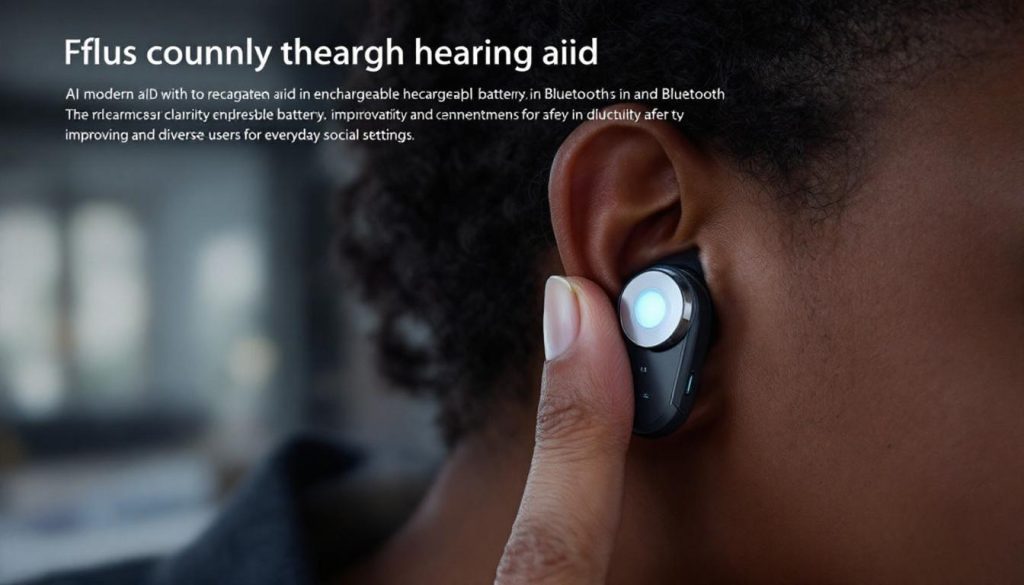Hearing aids have evolved into sophisticated devices that significantly enhance the quality of life for those experiencing hearing loss, whether due to age, medical conditions, or other factors. While traditionally associated with older adults, hearing loss can affect individuals at any age, making advances in hearing aid technology increasingly relevant. Modern hearing aids incorporate a range of features designed to provide personalised, clear, and convenient hearing support.
One of the most transformative developments in hearing aid technology is the integration of artificial intelligence (AI). AI-powered hearing aids can adapt in real-time to the wearer’s environment, automatically adjusting sound settings to improve speech clarity and reduce background noise. These devices learn from daily experiences, creating a customised hearing profile that responds dynamically to different social and acoustic settings. Some models go further by including fall detection capabilities, offering an additional safety feature for users. Notably, companies like Sonova have introduced hearing aids employing real-time AI with advanced processing chips that substantially enhance speech understanding even in noisy environments, marking a new milestone in hearing aid innovation. Similarly, OrCam’s AI-driven devices focus on aiding users in noisy social settings by isolating specific voices, thereby combating social isolation.
Rechargeable batteries represent another significant improvement in hearing aids, removing the inconvenience of frequently replacing small disposable batteries. High-quality lithium-ion rechargeable batteries can provide up to 30 or more hours of continuous use on a single charge and typically last several years before needing replacement. This feature not only offers cost savings and environmental benefits by reducing battery waste but also enhances safety, especially in households with children or pets who might accidentally swallow batteries. Users benefit from the convenience of simply charging their hearing aids overnight, similar to how smartphones are used, with some models offering even longer battery life, up to around 51 hours per charge.
Connectivity options like Bluetooth further elevate the functionality of hearing aids, allowing them to seamlessly integrate with smartphones, televisions, and other devices. This connectivity enables users to stream phone calls, media, or conversations directly to their hearing aids, improving sound quality and user experience. Remote control via apps also allows for easier adjustments without needing to physically handle the device, providing a tailored hearing experience that suits various situations.
Noise reduction remains a crucial feature in hearing aids, helping wearers focus on desired sounds while minimizing distracting background noise. Advanced directional microphones and noise suppression technologies enable users to isolate sounds in front of them or from specific directions, which is especially useful in crowded or noisy environments such as social gatherings or busy public spaces.
Interestingly, some consumer electronics like Apple’s AirPods Pro 2 have incorporated functionalities resembling hearing aids through recent software updates. With iOS 18.2, these earbuds can conduct hearing tests and adjust audio settings to assist users with mild to moderate hearing loss. Features like Conversation Boost and live listening support make these devices a helpful, albeit not complete, alternative to traditional hearing aids for certain users, highlighting how hearing improvement technology is becoming more accessible and integrated into everyday gadgets.
The convergence of AI, rechargeable technology, device connectivity, and advanced sound processing is rapidly transforming hearing aids from simple amplifiers into intelligent, adaptable systems that enhance hearing in a variety of real-world scenarios. These advancements not only improve auditory experiences but also address practical concerns such as convenience, safety, and environmental impact, offering a comprehensive solution for those living with hearing loss.
📌 Reference Map:
- Paragraph 1 – [1], [4]
- Paragraph 2 – [1], [3], [4]
- Paragraph 3 – [1], [5], [6], [7]
- Paragraph 4 – [1], [2]
- Paragraph 5 – [1]
- Paragraph 6 – [1], [2], [3], [4], [5], [6], [7]
Source: Noah Wire Services





